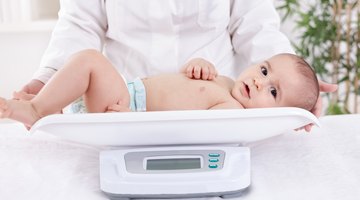Ways to Test a Baby's IQ
Speculation about what contributes to a child’s IQ or intelligence quotient looks at the roles of nature versus nurture, parent’s age, breast feeding versus formala, music heard in the womb and educational videos for babies. Tests for babies assess their cognitive skills. When it comes to measuring actual intelligence, you may need to wait until your child is closer to school age to get a good sense of whether he’s going to be the next Einstein.
Wechsler Intelligence Test for Children and Stanford Binet
The Wechsler Intelligence Test for Children and the Stanford Binet can measure a child’s intelligence, notes the Brainy Child website. When people talk about IQ, they usually mean these test measurements. Both tests are designed for slightly older children the Stanford Binet for those ages 2 to 23 and the Wechsler test for 6 and up. Brainy Child also warns that many creative and gifted children don’t score especially high on the tests “because certain intelligences do not test well on standardized IQ examinations.”
Fisher-Price IQ Test

The Effects of Isolation on a Child's Social Development
Learn More
The Fisher-Price toy company developed an intelligence test for babies, the Daily Telegraph newspaper in London reported in 2004. Fisher-Price commissioned Dorothy Einon, a University of London psychology lecturer and author of child development books, to develop a test for babies aged 6 months to one year. She came up with a 10-question test to help parents determine how their child compared to the average baby. In the test, parents were asked to assess behaviors such as how their child played with a teddy bear, whether she could play patty-cake and how she responded to her name. Some child psychologists greeted the test with skepticism, fearing it would unnecessarily alarm some parents and saying it was not a good predictor of intelligence later in life.
Bayley Scales of Infant Development
The Bayley Scales of Infant Development is widely used to assess a young child’s development. Healthline.com reports the BSID is used for children from 1 month to 42 months of age to gauge their cognitive, motor and behavioral development. The cognitive part of the test evaluates abilities such as sensory acuities, memory learning and problem solving, vocalization and mathematical concept formation. The test helps with the diagnosis and treatment of young children with developmental disabilities or delays.











